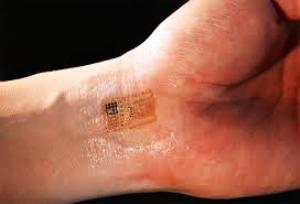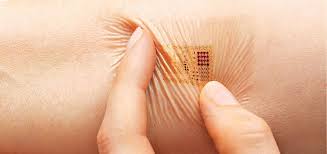_ Department 🔬 laboratory (propagation and expansion of nanochips)
Examining and introducing nanochips (MEMS-Bio) and the application of nanoelectronics in the advancement of medical industries
Researcher and author: Dr. ( Afshin Rashid)
Note: Applications of nanoelectronics technology in the medical industry with nanochips (MEMS-Bio) The basic applications of MEMS in this field are related to measuring blood pressure, flow of internal body fluids, gas masks, dialysis, respiratory capacity, and starting with nano robots. Medical care ends. As an example, we can mention Pressure Medical, which has a structure based on piezo properties and is used.
Bio-MEMS nanochips have a wide range of applications from environmental and water monitoring to drug discovery and DNA strand testing. The new technology of nanochips is based on microfluidic systems, which are capable of analyzing small volumes of liquids.
Accordingly , nano electronic chips are used in the field of manufacturing nano medical devices in the following order:
-chip-a-on-Lab: A plastic chip that has been micro-machined to a very high ratio, and actually a laboratory is placed on a chip, which has dimensions of 20x37x3 mm.
: Pharmacy-on-a-chip Here, the pharmacy is placed on a chip that is connected to the body and measures body fluids, and if the body needs it, the fluid is injected automatically . This device is used to adjust insulin, hormone and pain reliever for diabetic patients .
3-man-Pac: This nanochip is still in the pilot stage and is being researched . It consists of very small silicone teeth that open and close like a jaw and measures the number of red blood cells through a 20 micrometer channel and captures or releases them to reach the desired amount . The final goal they have considered for this device is to pierce the cells and inject DNA, protein, medicine into them to restore genetic balance.
MEMS chips in medicine is a new manufacturing technology. A way to build complex electromechanical systems used in integrated manufacturing techniques, such as those used for integrated circuits (ICs).
MEMS technology and (nanoelectronics) in medical sciences and histology, such as (polymeric chain reaction microsystems (PCR) for DNA amplification and identification and pinhole microscopes for reviewing micromachines (STMs), (creating chips inspired by biological principles) Science enables the detection of dangerous biological and chemical agents and micro-systems for selecting and displaying drugs with very high operational capacity.
Researcher and author: Dr. ( Afshin Rashid)
Specialized doctorate in nano-microelectronics








